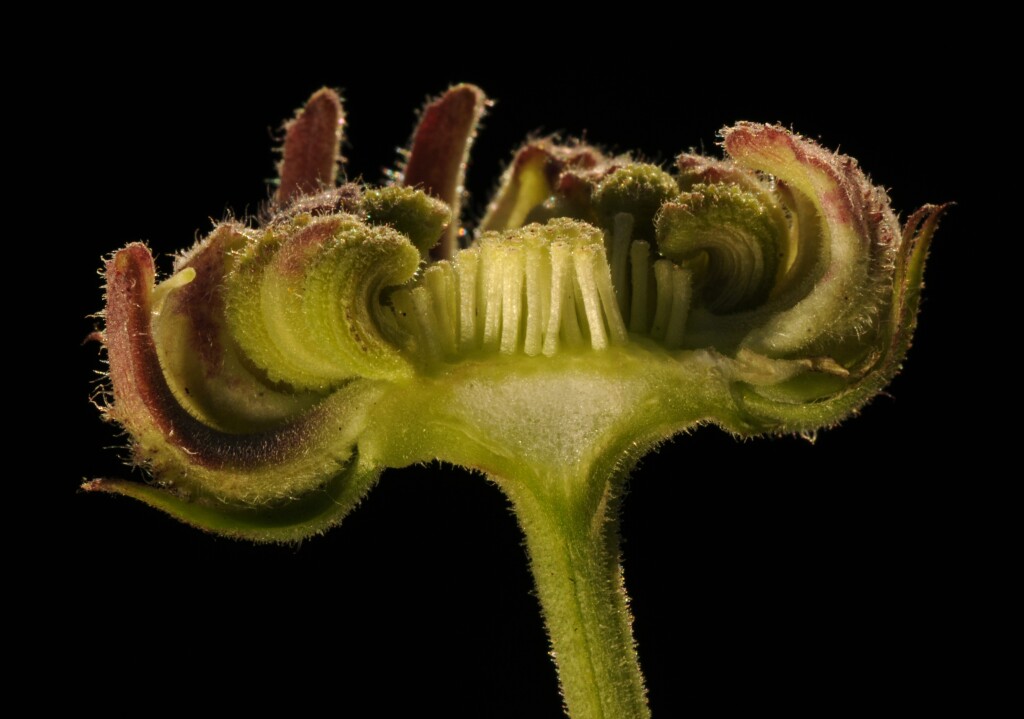Calendula officinalis
L. Garden MarigoldErect to ascending annual or short-lived perennial herbs, to c. 50 cm high; branches glandular-hairy. Leaves narrowly obovate, elliptic, orbicular, oblong or lanceolate, 6–20 cm long, 0.5–5 cm wide, entire or few-toothed, with stalked glandular hairs. Involucral bracts in c. 2 rows, lanceolate, 10–15 mm long. Ray florets c. 20–60, in 1–3 rows, ligules yellow to orange, 8–30 mm long; disc florets commonly yellow or orange but sometimes brown-black or green. Cypselas of 2 or 3 types, commonly the outermost 3-winged with smooth backs, innermost more strongly curved, not or barely winged and with a ridged or tuberculate back, sometimes an outermost row of beaked, strongly incurved cypselas with spines on the back is also present. Flowers most of the year.
VVP, GipP, OtP, HSF. Also naturalised SA, NSW, Tas. Native to Mediterranean area. A highly variable, widely cultivated species. Sparingly established in Victoria, known by only 3 collections, one pre-1900 ('Yarra Yarra'), and two recent collections from weedy grassland near Geelong, and degraded foreshore area at Williamstown.
Short, P.S. (1999). Calendula. In: Walsh, N.G.; Entwisle, T.J., Flora of Victoria Vol. 4, Cornaceae to Asteraceae, pp. 832–833. Inkata Press, Melbourne.
 Spinning
Spinning



